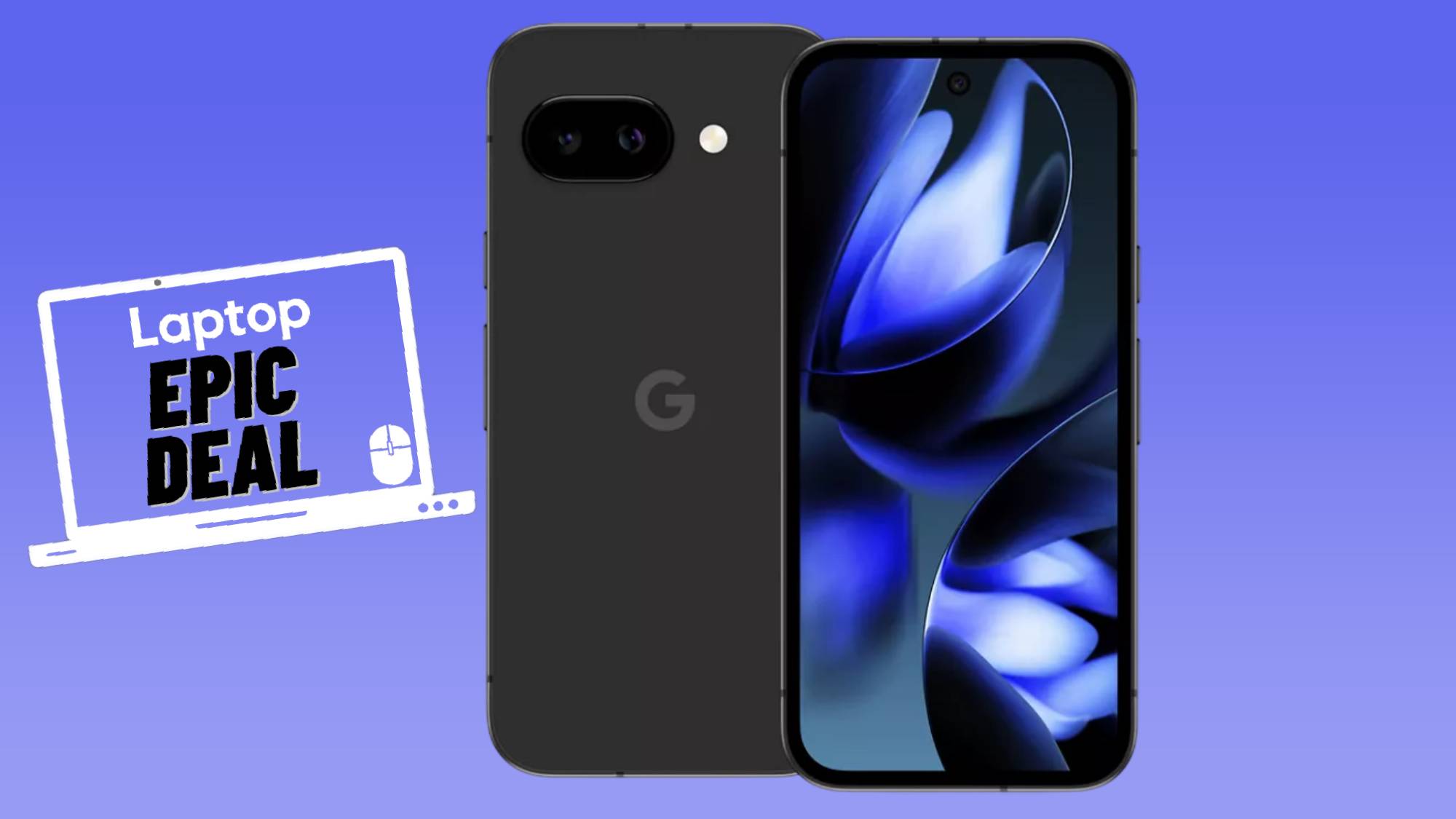Google lied about the Pixel Watch’s ‘24-hour’ battery life — it’s actually longer
Google’s Pixel Watch can last longer — but that doesn’t make its battery life any better
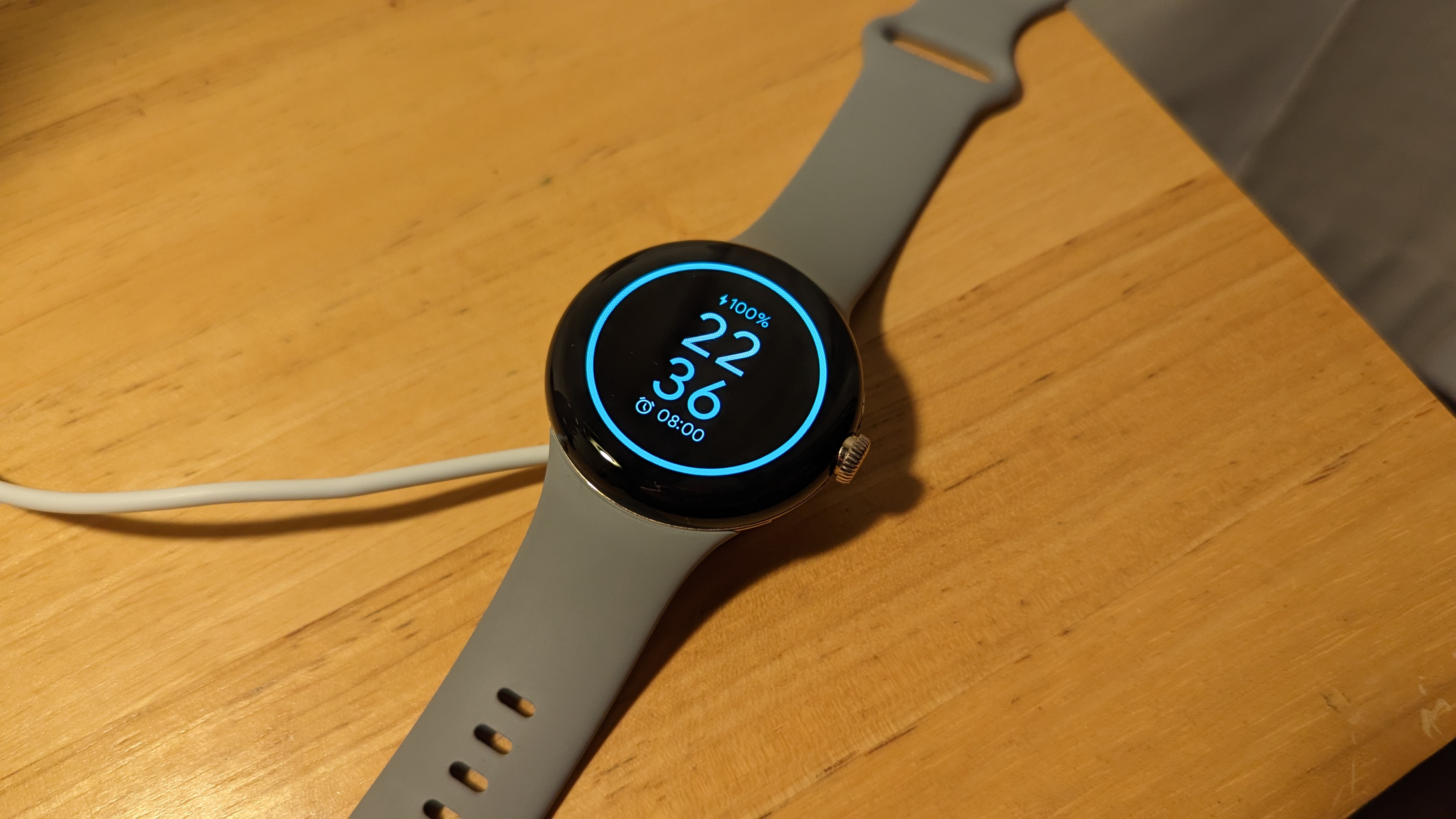
I adore my Pixel Watch. It’s like a satisfyingly symmetrical black pebble that can tell the time, date, weather, and a multitude of health-tracking metrics in all manner of stylish ways. In the lead-up to the big reveal during the Google October event, I declared the state of Google’s first smartwatch would be the only condition stopping me from picking up the Pixel 7. But I was sold after the tech giant gave a rundown of what the wearable could do.
Seamless connectivity to your Pixel devices? Check. Integrated Fitbit fitness and health tracking right on your wrist? You got it. Helpful apps like Google Maps and YouTube Music to listen even when offline? Done and done. All this wrapped up in a beautifully compact design makes for a promising smartwatch. But listen — I ain’t no schmuck.
I knew full well that the Pixel Watch is a first-generation smartwatch, meaning it will inevitably come with a few pain points. That old Exynos 9110 SoC — a four-year-old chip used in the first Samsung Galaxy Watch in 2018 — and strangely large display bezel were already strong indications that Google’s wearable wouldn’t be perfect. But this is understandable for a first-gen device, and the Pixel Watch still made enough of an impact to turn heads.
I was lucky enough to get the Pixel Watch for free in a limited-time deal, so I don’t feel as hard done by when experiencing the smartwatch’s faults. However, there is one thing that irks me: battery life.
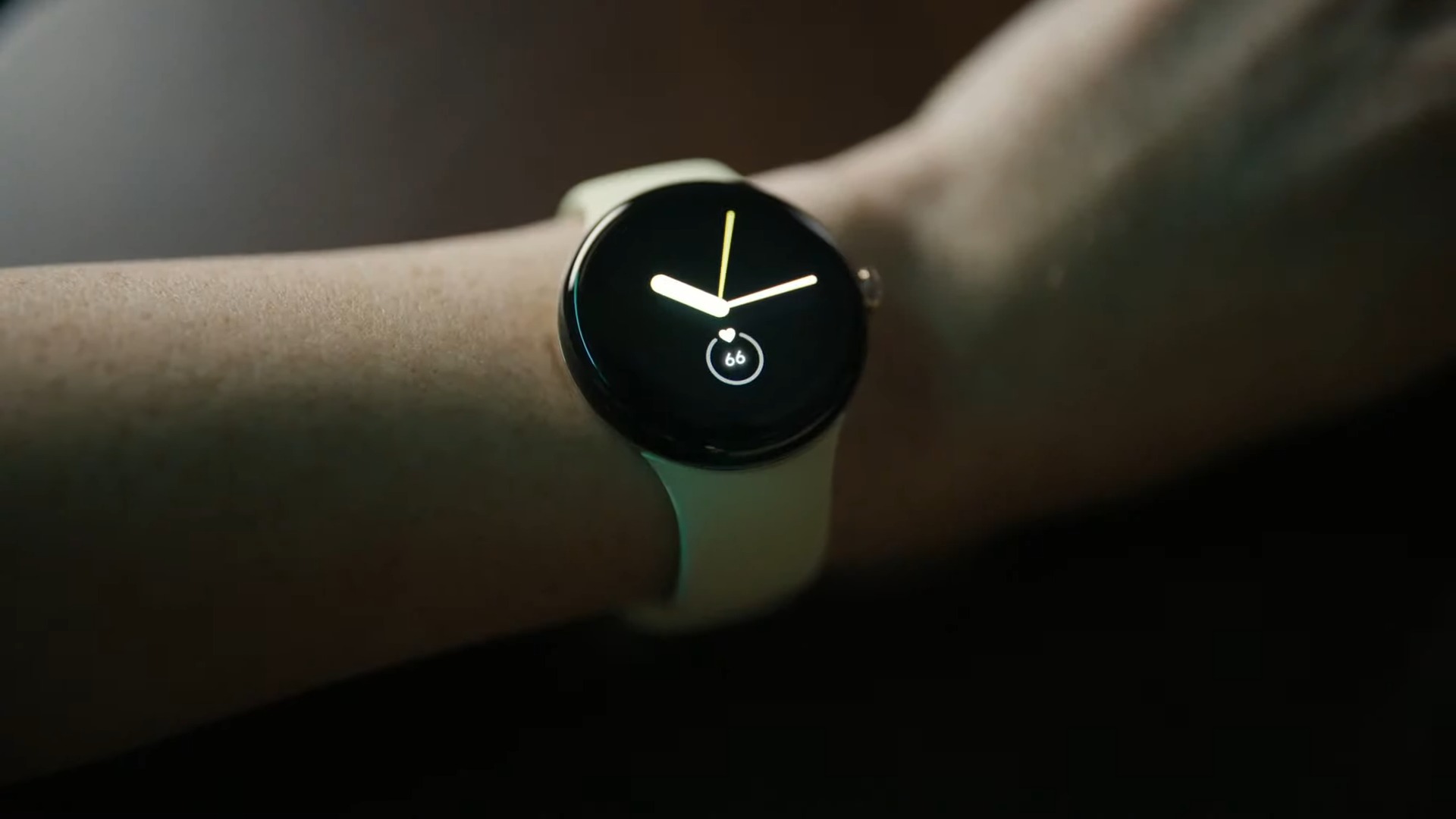
Declaring to boast “up to 24 hours” of battery, that’s quite a bold claim from a smartwatch fitted with a 294mAh battery capacity. Sure, the Cortex M33 co-processor is there to help out with power efficiency, but a full day? I’m intrigued. But I know to take a company’s claims with a pinch of salt. “Maybe it’s not a full 24 hours,” I told myself, “but it must be relatively close, right?”
Nope, I was gravely mistaken. After a few days of general use, from recording a daily 40-minute workout to receiving a bundle of notifications and using Google Maps, I found I was charging my Pixel Watch twice a day — averaging every five hours. And that was without having the Always-on option turned on. For a wearable that’s meant to stay on your wrist, that’s not a good look. So, it got me wondering: how on Earth did Google come up with its 24-hour claim?
The claim
As Google notes in its Pixel Watch support page, the 24 hour battery life was based on the following factors:
- Receiving 240 notifications.
- Checking the time 280 times (tilt-to-wake).
- Making a 5-minute LTE phone call.
- Doing a 45-minute LTE and GPS workout with downloaded YouTube music playback.
- Using Google Maps for 50 minutes of navigation connected to a phone via Bluetooth.
- Having the watch configured to its default settings (meaning the Always-on display was turned off.
To be honest, I can’t say I’m popular enough to receive 240 notifications over the course of 24 hours, but I’m confident that even if I followed these factors to a T, my Pixel Watch would barely last half this time. I’m not the only person who has experienced this drain in battery life, either. A number of reviews, including sister-site Tom’s Guide, could barely eke out anywhere near 24 hours.
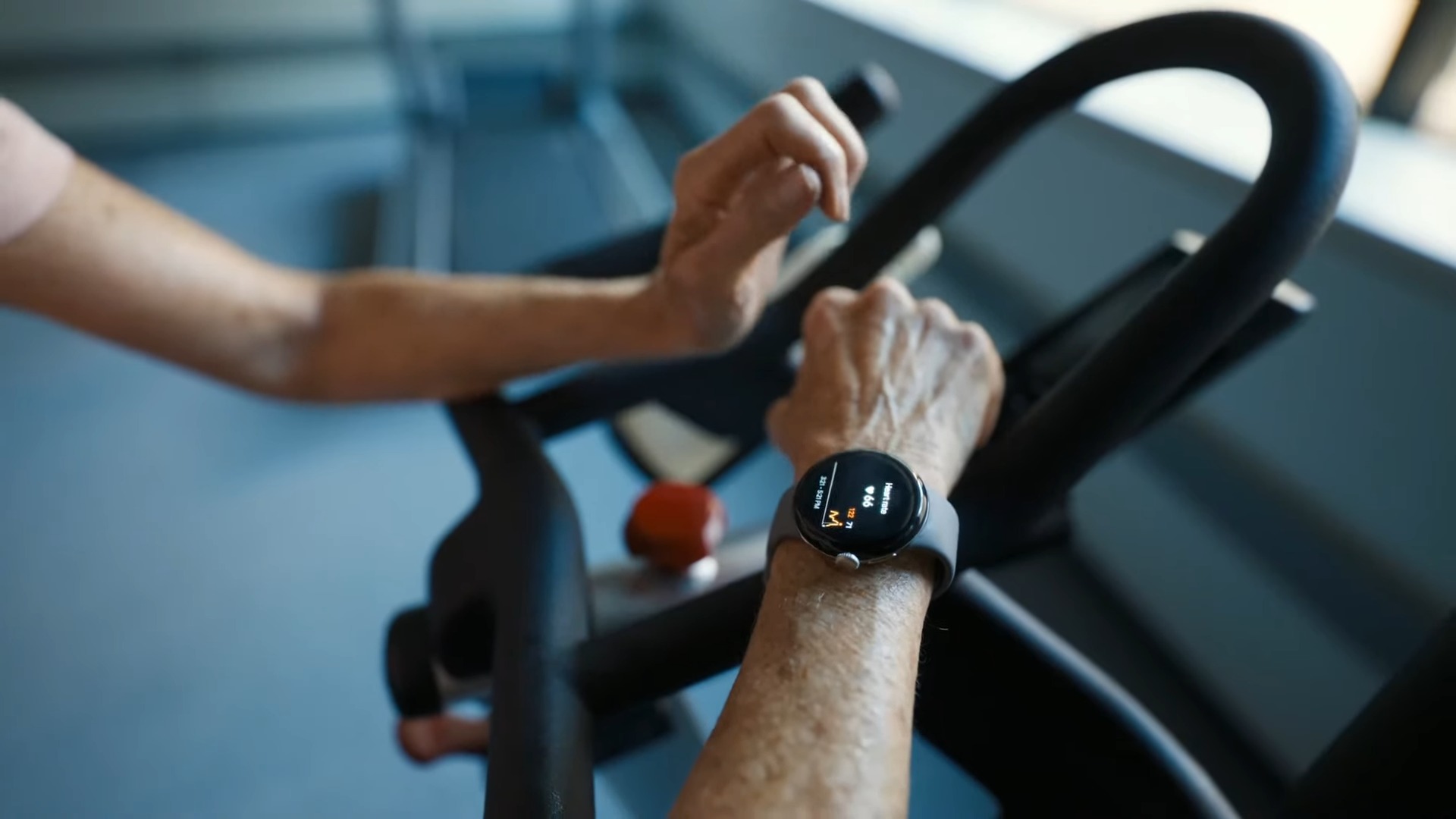
It confuses me how Google could achieve this length of time, and it annoys me that this is what the company puts as a highlight. For those who bought the Pixel Watch outright — unlike myself — I can imagine this must grind their gears.
All that said, the days when I didn’t actively use my Pixel Watch for tracking my exercise or using it to navigate around town, I found the battery could get me through a whole day without needing a quick charge.
The test
I started to wonder again: “So, just how long can the Pixel Watch last if pushed to its limits?” Google packed a couple of battery-saving features to keep its wearable’s battery drain at bay, including Bedtime mode and Battery Saver. To test how long it could last, I decided to turn on the latter right after a full charge.
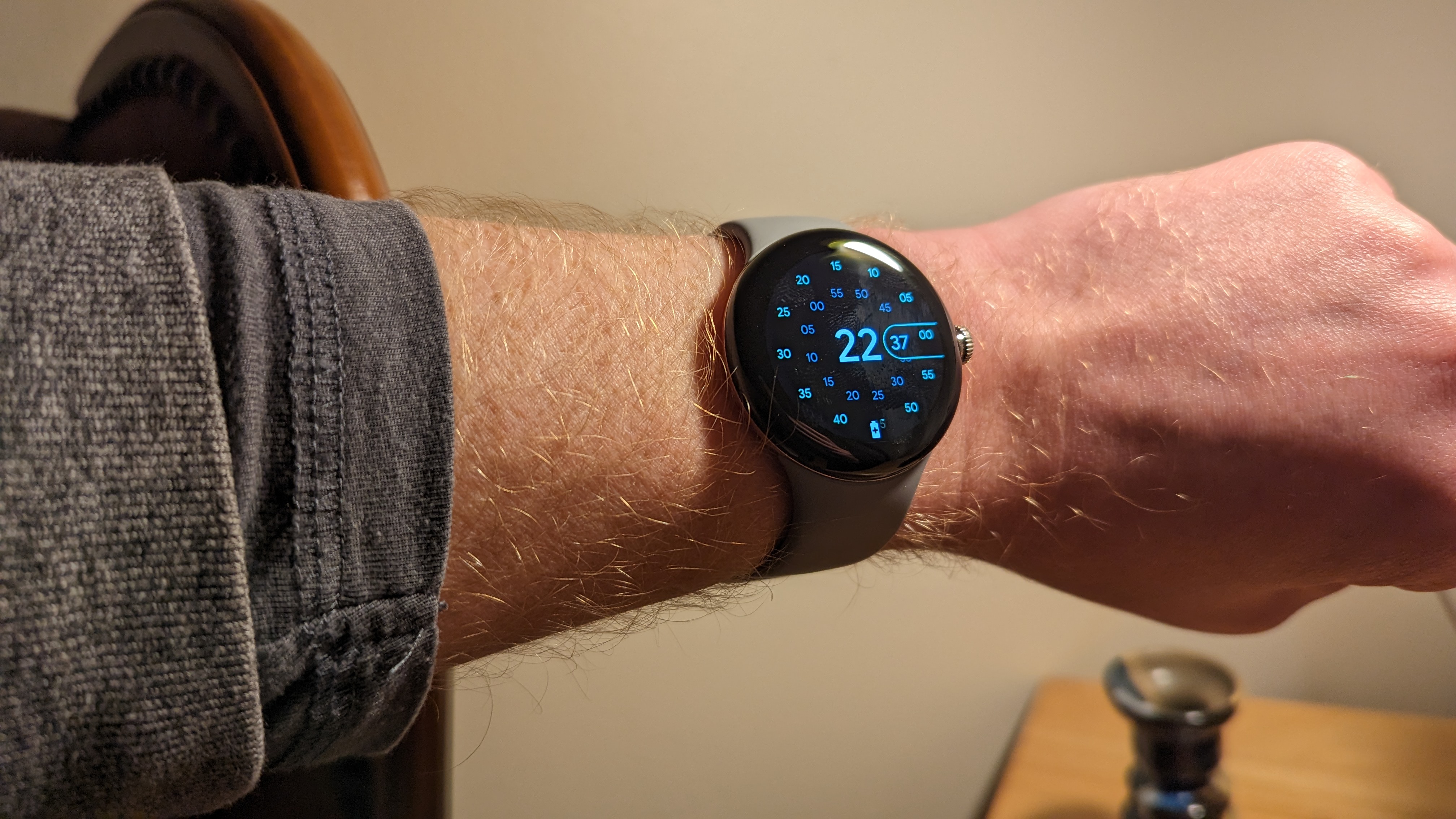
I started the 24-hour test at 10:38 p.m., with Battery Saver mode turned on right off the bat. This option turns off the Always-on screen and tilt-to-wake to extend the Pixel Watch’s battery life. Not exactly ideal for a watch, seeing as you have to press the dial in order to simply see the time, but the difference in longevity when turned on is immeasurable. I still received notifications and checking my Fitbit stats, and I barely saw the percentage drop.
At 11:45 p.m., I switched on Bedtime mode. This turns off the watch screen, tilt-to-wake, and touch capabilities, along with limiting the notifications received. While it would be nice to have this done automatically, like on my previous Apple Watch SE, having this option greatly extends the Pixel Watch’s battery throughout the night.
Stay in the know with Laptop Mag
Get our in-depth reviews, helpful tips, great deals, and the biggest news stories delivered to your inbox.
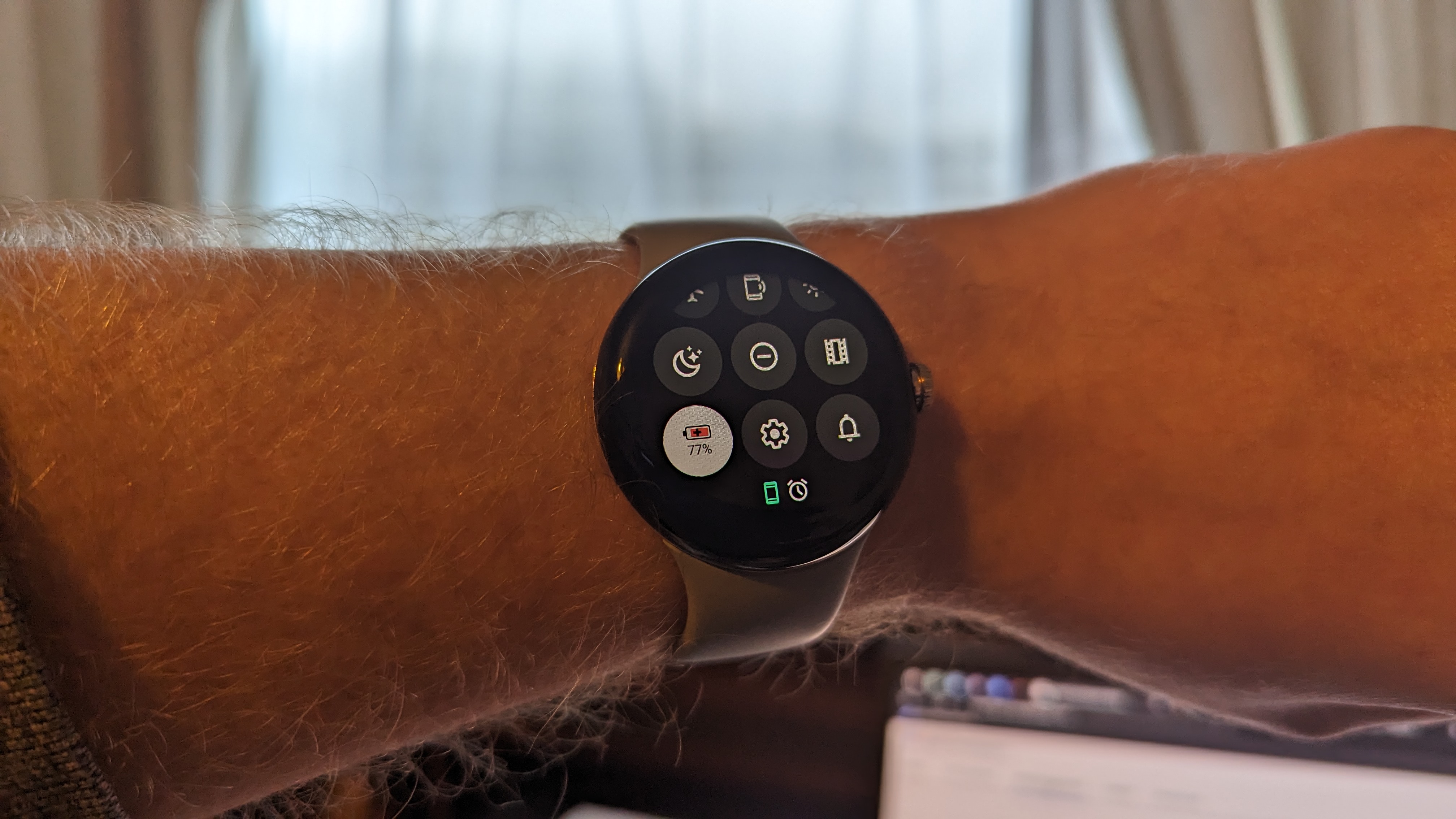
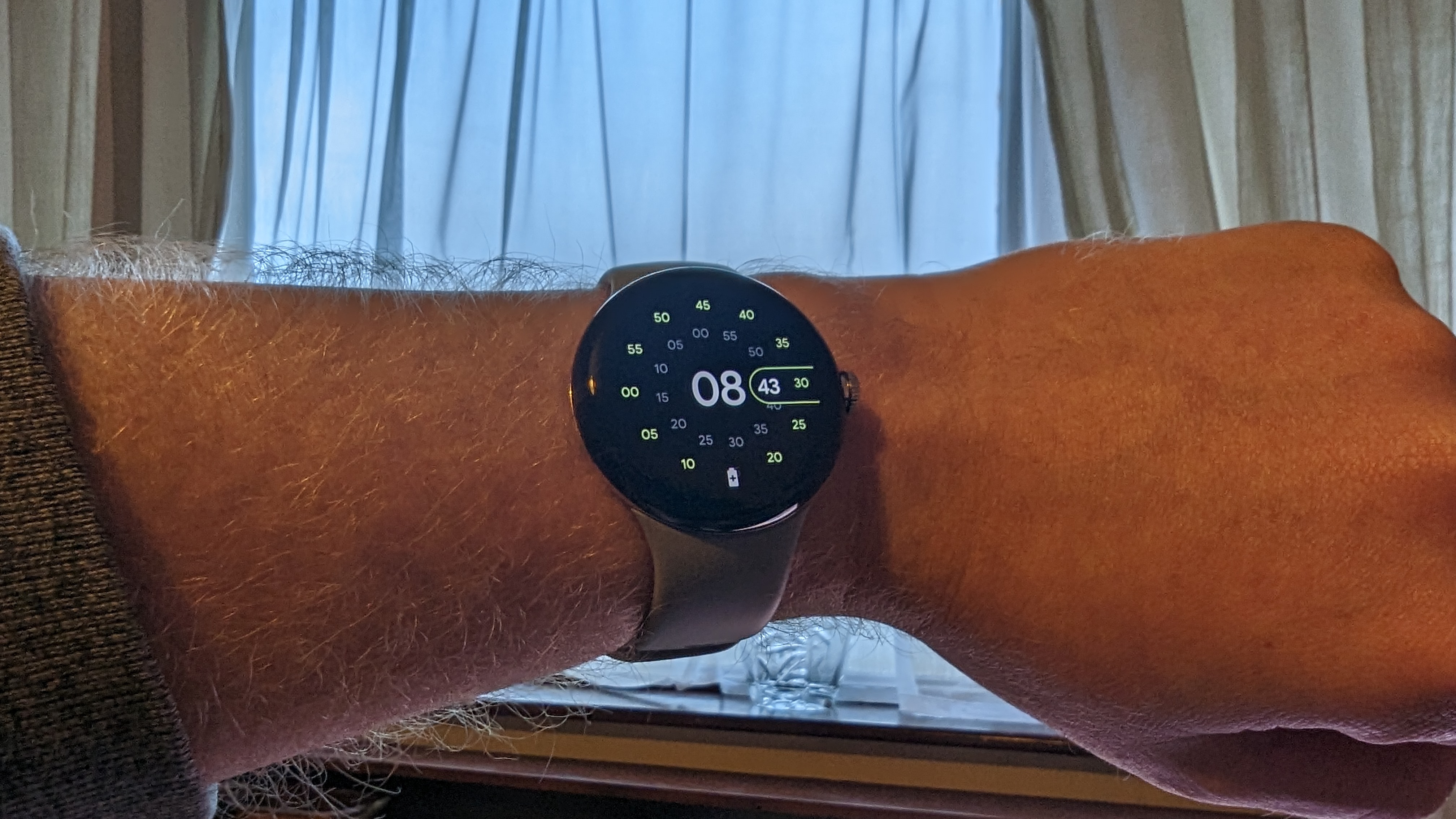
After waking up the next day and checking how much the smartwatch’s battery had plummeted at 8:43 a.m., I found it still had 77% left in the tank. That’s very promising, but it still had more than 12 hours to go if it could actually reach the 24-hour mark. With Battery Saver still turned on, I went about my day receiving notifications and the hourly “make sure to get these steps in” Fitbit alerts.
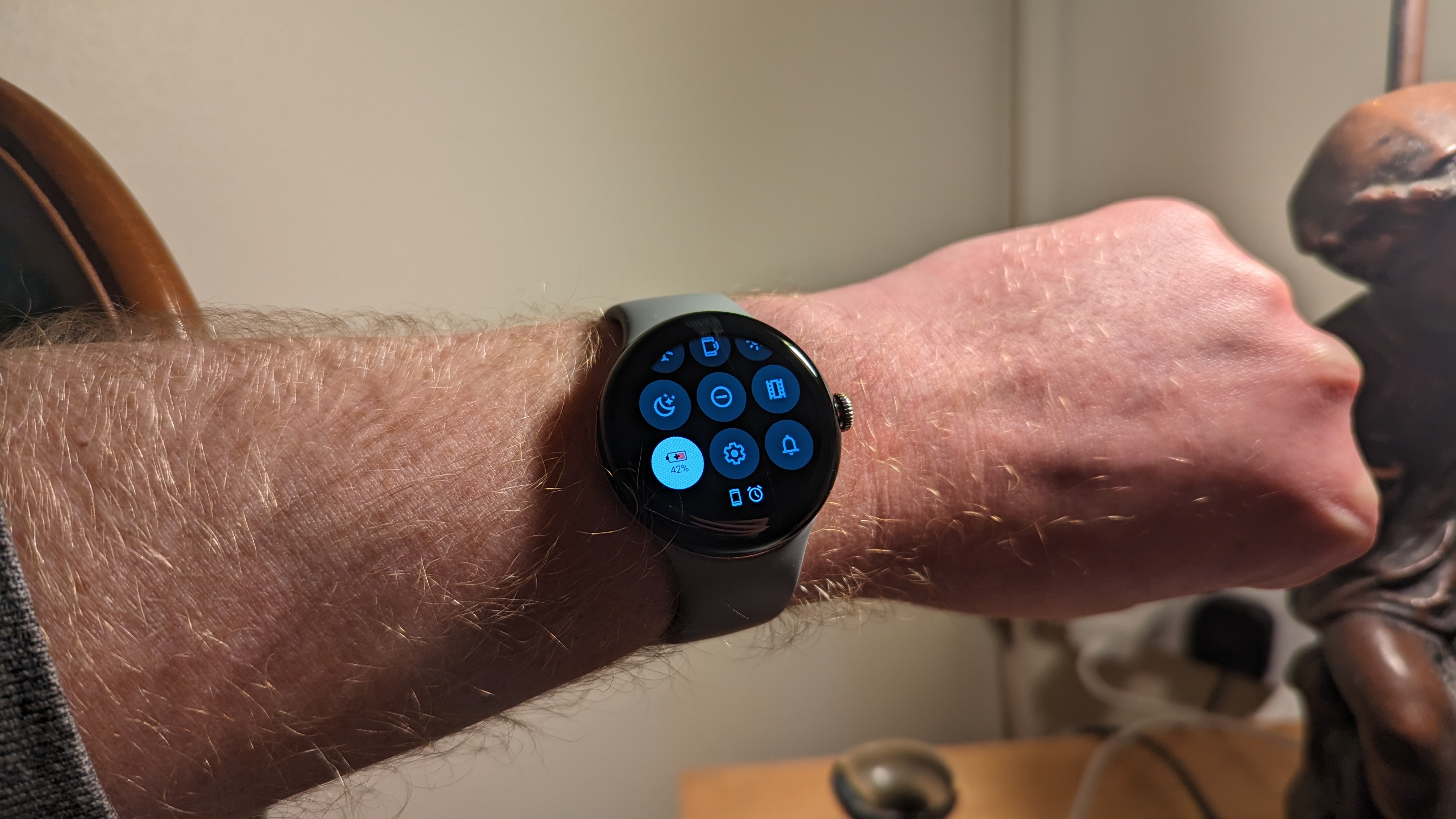
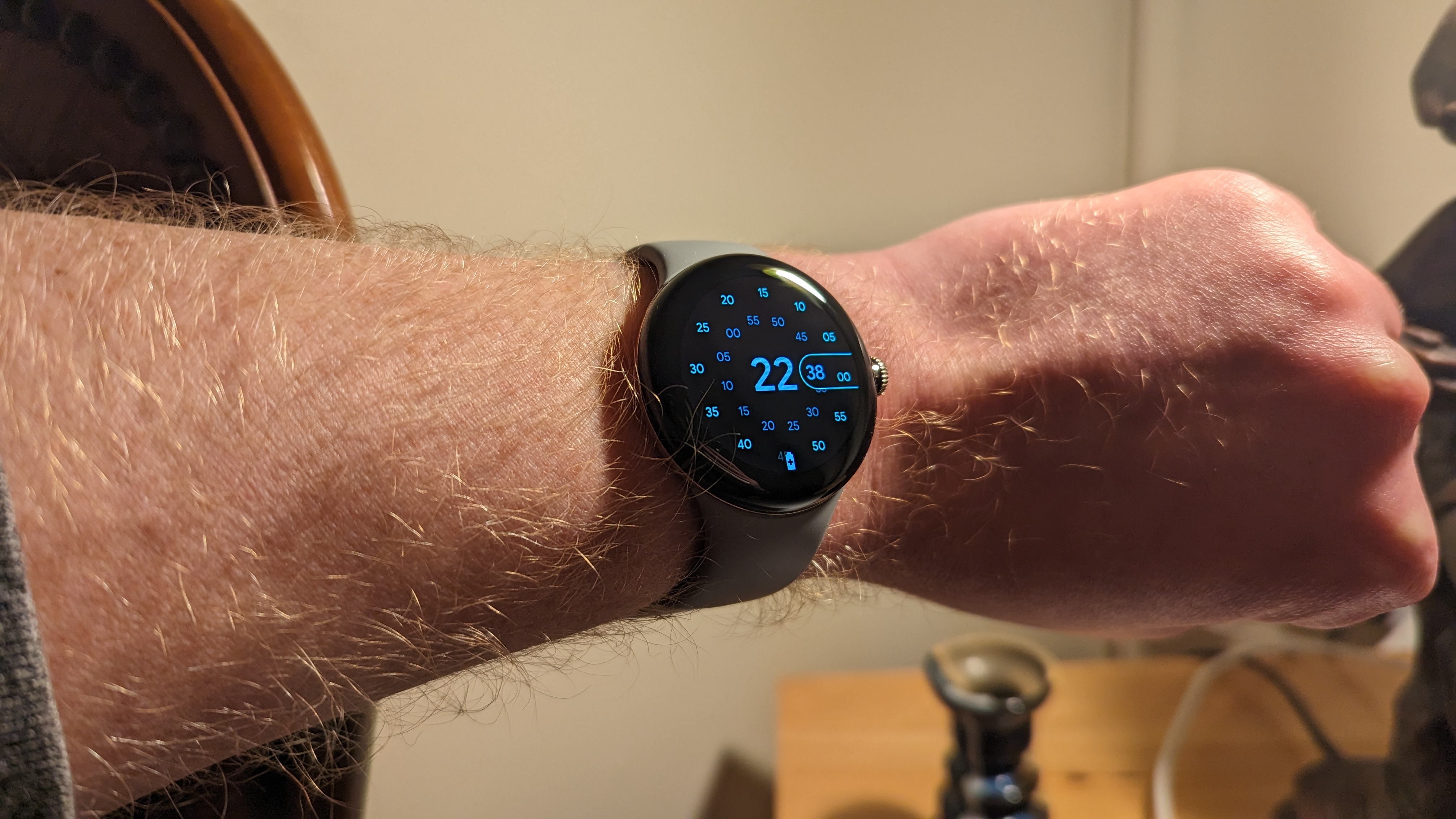
Finally, 10:48 p.m. arrived and I checked on its battery: 42%. A full 24 hours and the Pixel Watch still had just under half of its battery left. Well, well, Google, it appears your smartwatch can go beyond your claimed time.
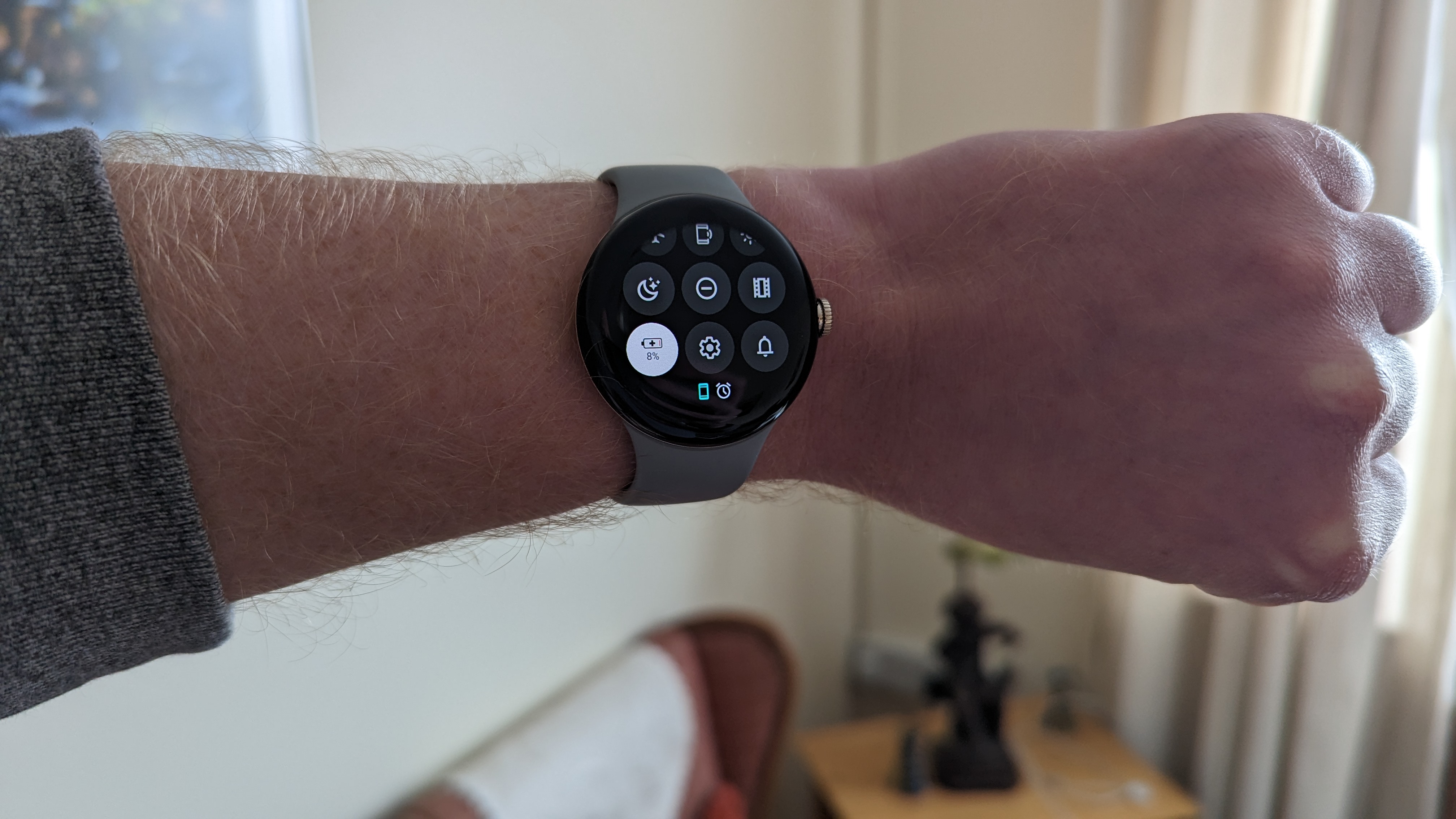
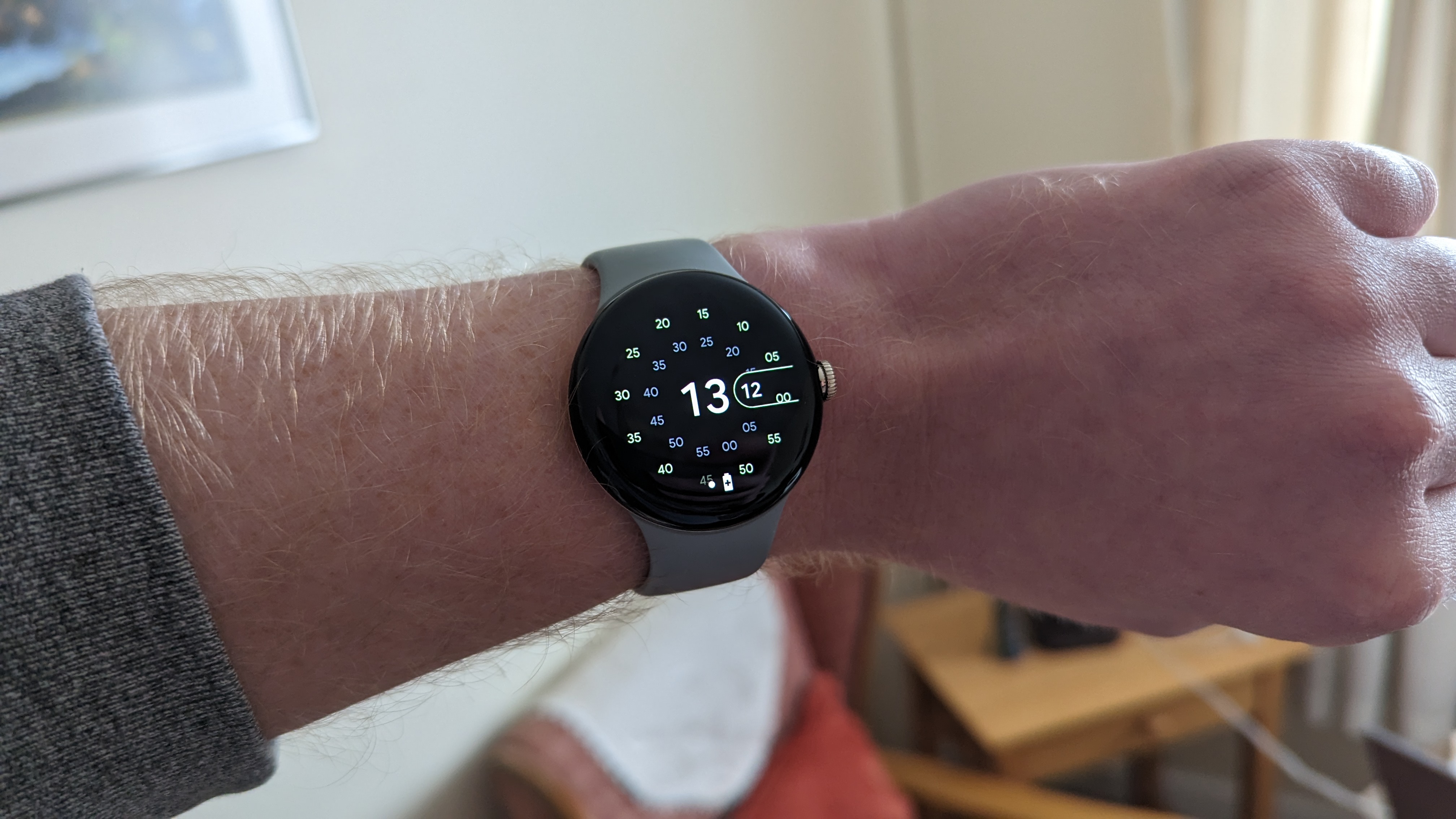
I decided to see just how much longer it could last. I put it into Bedtime mode like the night before, and at 10:38 a.m., the battery was down to 16%. After one last check at 1:13 p.m., it was on its last legs at 8%, which is when I needed to zap it with some juice before heading out for the afternoon. This test of mine shows that the Pixel Watch can last over 40 hours without a charge. But, of course, these were in the right conditions.
The good and the ugly
Now, while this personal test shows Google’s Pixel Watch can go beyond 40 hours, I don’t recommend keeping its Battery Saver mode on at all times. It defeats the purpose of a good smartwatch — like being able to easily see the time, date, weather, and more at a glance. Plus, I want to be able to look at Google’s stylish watch faces without having to click a button; it’s part of its fashion statement.
With this in mind, I’ve come to understand why the tech giant decided to state that it lasts “up to 24 hours.” But I still think it’s wrong, especially for the average user that will use a smartwatch in a conventional way. If an Always-on option is available and it’s made to track your workouts and sleep patterns, I shouldn’t have to worry about the smartwatch’s battery life if I use these features.
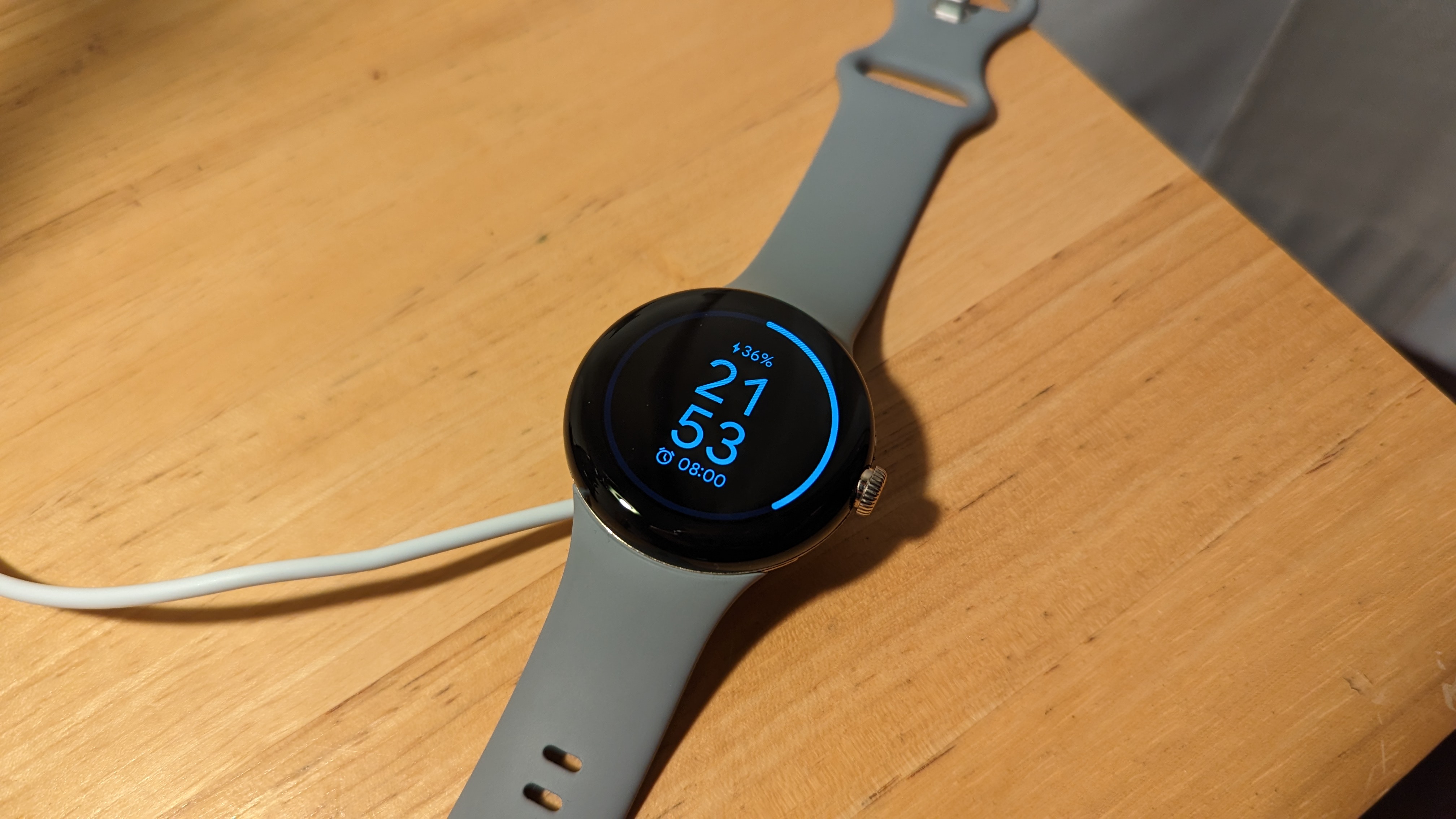

That’s the ugly part; there is plenty of good in the Pixel Watch. My testing also included how fast it can charge, and it’s wicked. From 36%, it took just over 40 minutes to charge to 100%, and that’s way faster than what I could get on my previous Apple Watch. And, as shown in my test, Google’s battery-saving features work like a charm, and that’s something Apple only introduced in the Apple Watch Series 8 with the new Low Power Mode.
I still would recommend the Google Pixel Watch, especially for those who picked up the Pixel 7 or Pixel 7 Pro. To me, the lesson to take away from it all is: battery life claims from companies can be hogwash, even if they undersell.

Darragh Murphy is fascinated by all things bizarre, which usually leads to assorted coverage varying from washing machines designed for AirPods to the mischievous world of cyberattacks. Whether it's connecting Scar from The Lion King to two-factor authentication or turning his love for gadgets into a fabricated rap battle from 8 Mile, he believes there’s always a quirky spin to be made. With a Master’s degree in Magazine Journalism from The University of Sheffield, along with short stints at Kerrang! and Exposed Magazine, Darragh started his career writing about the tech industry at Time Out Dubai and ShortList Dubai, covering everything from the latest iPhone models and Huawei laptops to massive Esports events in the Middle East. Now, he can be found proudly diving into gaming, gadgets, and letting readers know the joys of docking stations for Laptop Mag.
